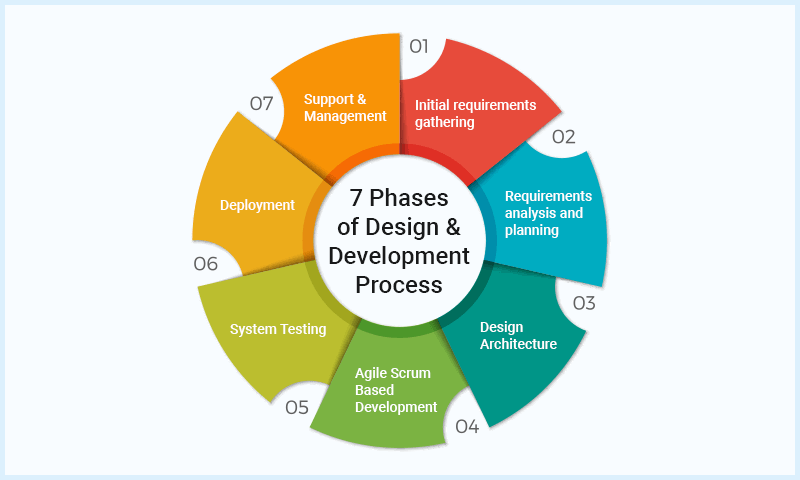Game Development & Programming

[Game] development and design process – This section delves into the core of game creation, exploring the essential aspects of development and programming that bring a game to life. From selecting the right tools to implementing complex game mechanics, this section provides a comprehensive overview of the development process.
Choosing the Right Game Engine and Programming Languages, [Game] development and design process
The choice of game engine and programming language is crucial for a game’s development. Different engines offer varying features, performance, and ease of use, while programming languages influence the development workflow and project scalability.
- Game Engines: Popular choices include Unity, Unreal Engine, and Godot, each with strengths in areas like 3D graphics, performance, and ease of use. Unity, known for its accessibility, is widely used for mobile and 2D games, while Unreal Engine excels in high-fidelity graphics and performance.
Godot, a free and open-source engine, is gaining traction for its user-friendly interface and powerful scripting capabilities.
- Programming Languages: C# is widely used in Unity, while C++ is common in Unreal Engine. Python is gaining popularity for its simplicity and readability, particularly in indie game development. The choice depends on the engine, project requirements, and developer expertise.
Designing and Implementing Game Logic and Functionality
This involves defining the game’s rules, mechanics, and how players interact with the game world. It encompasses core elements like:
- Game Loop: The heart of a game, it handles input, updates game state, and renders graphics. This loop typically involves:
- Input Handling: Processing player input from keyboard, mouse, or controllers.
- Game Logic Update: Applying rules to update game objects and state.
- Rendering: Displaying the updated game world on the screen.
- Game Objects and Components: Defining the entities in the game, such as characters, enemies, and items. Each object typically has components representing its attributes and behaviors.
- AI and Behavior: Implementing artificial intelligence for enemies, NPCs, or other interactive elements. This can range from simple scripted actions to complex decision-making algorithms.
- Level Design: Creating the game’s environments, including layout, obstacles, and interactive elements. This often involves using level editors or scripting tools provided by the game engine.
Integrating Game Systems and Mechanics
This involves connecting various game components and systems to create a cohesive and engaging gameplay experience.
- Inventory and Item Management: Implementing systems for players to collect, use, and manage items.
- Health and Damage: Defining how characters take damage, heal, and die.
- Score and Progression: Implementing systems for tracking player progress, achievements, and scoring.
- Audio and Visual Effects: Integrating sound effects, music, and visual effects to enhance the game’s atmosphere and immersion.
Optimizing Game Performance and Stability
This ensures the game runs smoothly and reliably on different platforms.
- Performance Optimization: Techniques include reducing draw calls, optimizing textures, and using efficient algorithms.
- Memory Management: Efficiently allocating and deallocating memory to avoid performance issues and crashes.
- Platform Compatibility: Ensuring the game works correctly on different operating systems, hardware, and devices.
- Bug Fixing and Testing: Thoroughly testing and fixing bugs to ensure a stable and enjoyable gameplay experience.
Marketing & Release: [Game] Development And Design Process
![Npd excellence theaiminstitute [Game] development and design process](https://cdn.storyboardthat.com/storyboard-srcsets/infographic-templates/design-process-example.png)
The final stage of game development involves marketing and releasing the game to the target audience. This crucial phase determines the game’s success and requires a well-defined strategy to reach the intended players.
Marketing Strategy
Developing a marketing strategy involves understanding the target audience and tailoring the message accordingly.
- Identify the target audience:This includes demographic information such as age, gender, interests, and gaming habits.
- Define the game’s unique selling proposition (USP):What makes the game stand out from the competition? Highlight its unique features and appeal to the target audience.
- Choose the right marketing channels:This could include social media, online advertising, influencer marketing, press releases, and partnerships.
- Develop a budget:Allocate resources for marketing activities based on the game’s potential and the chosen channels.
- Track and analyze results:Monitor the effectiveness of marketing campaigns and make adjustments as needed.
Promotional Materials
Promotional materials play a vital role in attracting players and generating excitement.
- Create a compelling trailer:A high-quality trailer showcasing gameplay, story, and characters can grab attention and entice potential players.
- Design eye-catching screenshots and artwork:These visuals should represent the game’s style and appeal to the target audience.
- Develop a website and social media presence:Provide information about the game, release date, and updates. Engage with the community and build anticipation.
- Offer demos or early access:Allow players to experience the game firsthand and generate feedback.
Platform Selection
Choosing the right platform is crucial for reaching the target audience and maximizing reach.
- Consider the target audience’s preferred platforms:Research the popularity of different platforms among the intended players.
- Evaluate the platform’s technical requirements:Ensure the game meets the platform’s technical specifications and performance standards.
- Analyze the platform’s reach and user base:Choose a platform with a large user base and active community.
- Explore potential monetization models:Consider the platform’s monetization options, such as in-app purchases, subscriptions, or advertising.
Community Engagement
Building a strong community around the game is essential for long-term success.
- Create a dedicated community forum or social media group:Provide a space for players to connect, share feedback, and discuss the game.
- Engage with players actively:Respond to questions, address concerns, and participate in discussions.
- Host contests and giveaways:Encourage participation and build excitement around the game.
- Gather feedback and implement suggestions:Use player feedback to improve the game and enhance the player experience.
Post a Comment for "Development & Design: A Comprehensive Guide"
Dilarang komen yang kurang sopan!
Post a Comment